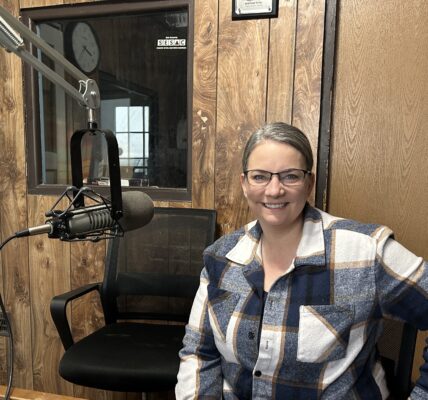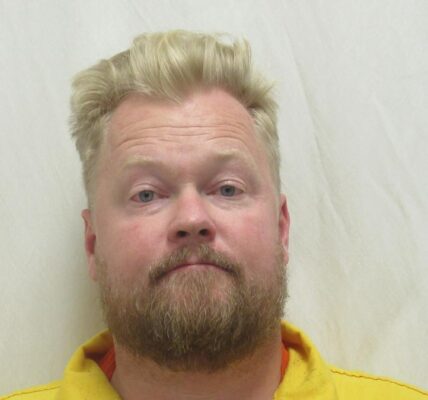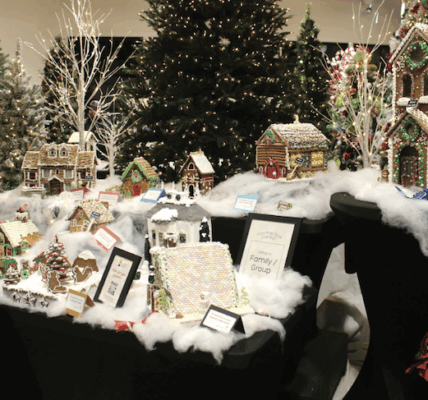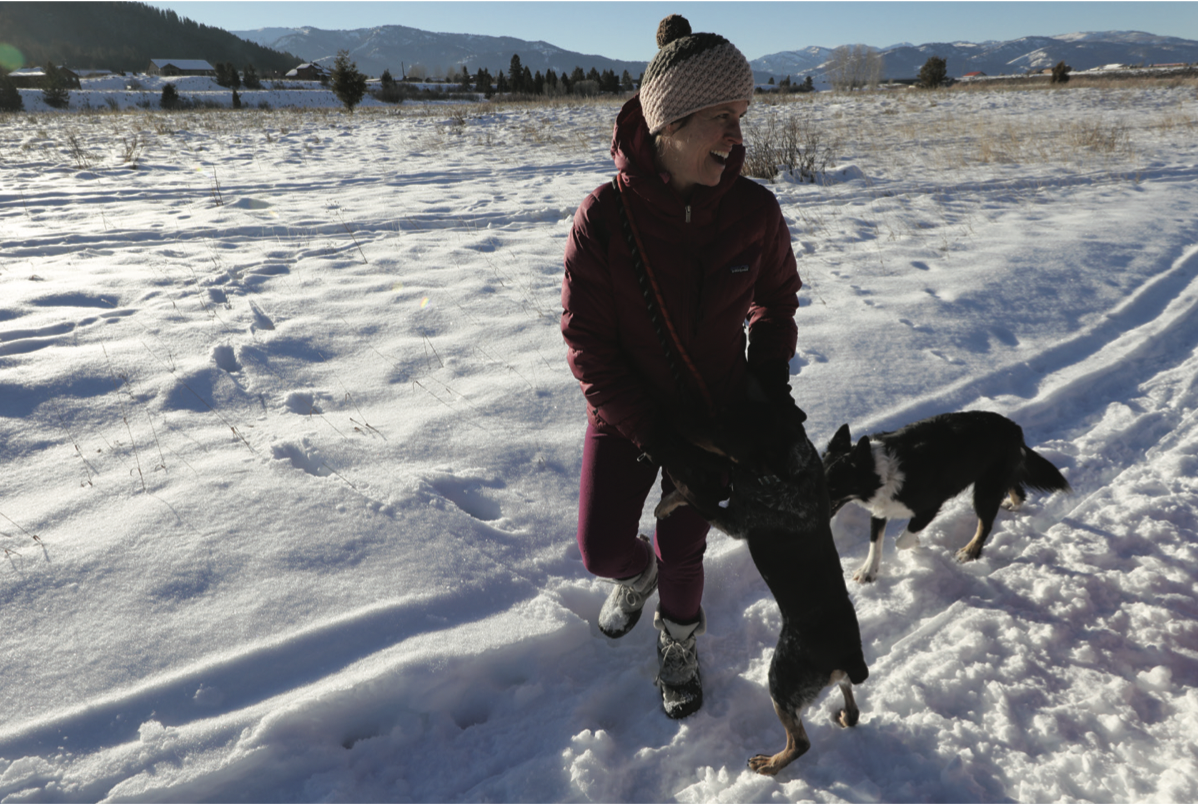
• Alpine Trails and Pathways serve as the entrance to the gateway.
By Julie Dockstader Heaps
SVI Media
For Kim Taft, the “perfect day” was two years ago. She and her border collie, Simon, teamed up for the first time in the Coney Classic — where dogs and owners compete each February in what is locally known as “Skijor.” Harnessed to one another, with Simon pulling Taft on skis, the two took off on groomed cross-country trails on the Alpine lakebed. It was a crisp Wyoming winter day with blue skies.
Taft and Simon didn’t win any awards that day. They didn’t care.
“We were living as a team,” Taft told SVI Media. “It didn’t take him long [to pick it up]. It was a beautiful day and just that look of sheer happiness on his face. That’s what I remember.”
Seeing that “look of sheer happiness” on faces — be they canine or human — is the sole reward of the philanthropic work of Alpine Trails and Pathways (ATaP), a small cadre of volunteers with a shared purpose — to connect communities through year-round accessible trails in and around Alpine.
“I truly believe that trails and pathways connect communities, neighbors and nature,” said ATaP board member Jeremy Larsen. “Done right, [trails] just make for a more enjoyable living experience.”
Year-round groomed pathways and trails are an “incubator” of sorts for a “better community,” Larsen surmised. “In a car, you can’t really say hi to your neighbor. Sometimes you can stop and chat, but you don’t have the connection you do on a path or a trail.”
But, he emphasized, it’s important to “smile and share the trail,” referring to a local marketing campaign directed at outdoor recreationists.
To facilitate respectful trail use, ATaP collaborates with Top of the Rockies, a some-30-year-old local snowmobile club. Larsen and Top of the Rockies board member Andrea Burchard recently spoke with SVI Media to discuss local trails — single and multi-track — and the cooperation that does and should exist between non-motorized and motorized users. Both — who also serve together on the Alpine town council — referred to “trail etiquette.”
“It’s important where we have the Greys River in our backyard,” said Burchard. “It’s a huge draw for snowmobilers, but you also have people on snowshoes, snow [fat] bikes and cross-country skis. We need to respect each other.
“We have a sign up at the mouth of the Greys, saying ‘this trail is shared’ and to ‘be respectful,’” Burchard added. “It just goes back to education and self-awareness, trying to see the big picture of everybody’s interests and recreational opportunities. Trail etiquette is very important — and personal responsibility.”
Educate yourself as to the laws and guidelines, Larsen counseled, “and abide by it — that goes for motorists and non-motorized, to be blunt.”
“There’s a whole trail campaign of signs that say, ‘Smile and wave.’ Everybody is out to enjoy the trails. [But] everybody has their own idea of what the trail is to them. The more population, the more conflict. Every pathway organization deals with it.”
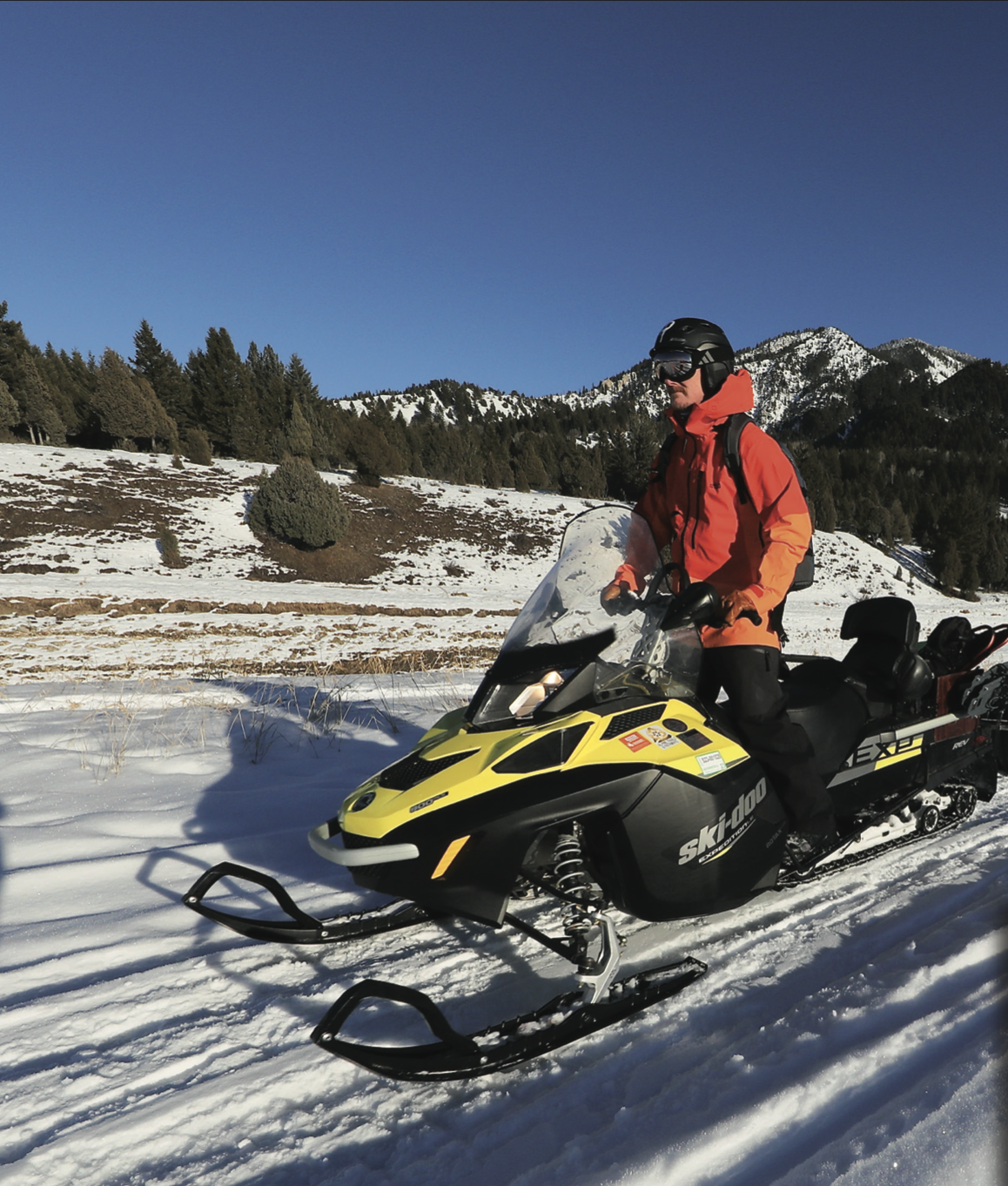
To facilitate this self-education, especially for recreational visitors to the area, Burchard related, there is a staffed visitors center in the Don Wooden Civic Center on Highway 89 in the center of Alpine. “That’s a place where people can go to learn about the area, and we encourage people to utilize that resource.”
Burchard, who is in her first term on the Alpine town council, spoke of her deep interest in the wise use of recreational opportunities unique to Alpine, with Palisades Reservoir nearby and the confluence of the Snake and Greys rivers adjacent to the town — all surrounded by miles of trailways. (To access a map of winter trails in the Alpine region, see https://www.alpinetap.org/
“We offer year-round recreation, various opportunities available to everyone, depending on whether you want motorized or non-motorized,” Burchard said, then adding, in reference to SVI Media’s description of Alpine as a recreational hub in Star Valley, “We definitely offer it all here.”
And in more than two decades of living here and using the trails, Burchard knows what she’s talking about. A snowmobiler who loves a good cross country ski jaunt, she related going along the Greys River trails with her dogs and having “sleds” (the local word for snowmobiles) come along.
“They slow down. Everybody waves,” she said, adding that there are the unfortunate times she must hold her dogs to the side of the trail when somebody “blows by like they don’t care.”
Burchard said having any trails closed “would have a huge impact on anyone who chooses to live here. It’s a hard place to live [with hard winters]. The people who choose to live here are generally here to take advantage of outdoor activities.
“Be aware of your surroundings,” she advised, including safety issues. “We have safety shelters on the Greys River. We have two beacon-check stations. Take into consideration other people using the area and try to get along.” (For more information on motorized trail use, see the website for Top of the Rockies at https://ridealpine.com/our-
Fellow outdoor enthusiast Larsen also gets to the point. “Be an ambassador for your sport,” he said. “That can be if you’re a walker, a hiker, a biker, ATV, motorcycle or a horse person, whatever it is. If you’re out doing stupid stuff, you’re essentially hurting the sport you’re representing, and it can have consequences.”
Larsen has done just about all the recreational activities Star Valley has to offer, but his first love is fat biking the winter trails. And, like Burchard, he’s lived here long enough to know the landscape. He moved to Jackson in 1996, and in 1998, “I met a girl.”
That “girl” became his wife, Dr. Niki Milleson, a family practitioner with Star Valley Health. After moving across the nation for her residency and fellowship, the two returned to what they love — Star Valley. “In 2010, we moved back here and been here ever since,” Larsen related.
While his wife takes care of the families of Alpine, he takes care of everything else. Along with the town council and ATaP, Larsen serves on several other boards, including the Star Valley Health Foundation, Alpine Travel and Tourism, Lincoln County Economic Development, and Greys River Collaborative.
His personal passion? Grooming the pathways surrounding Alpine. On the founding board of the Alpine Trails and Pathways (ATaP) created as a 501(c)(3) in 2020, Larsen credits the beginning of groomed trails here to the Alpine Cross Country Ski Association (ACCSA) — the forerun-ner to ATaP. With a grant and an ARGO, a six-wheeled vehicle with a grooming drag, ACCSA put in some 15 kilometers of groomed trails on the lakebed.
Today, ATaP has a pathway permit with the Palisades Ranger District and the Caribou-Targhee National Forest for the lakebed and adjacent Alpine pathways. And they have a pending application into the Greys River Ranger District in Bridger-Teton National Forest for a single-tract, non-motorized trail system.
With fundraising and community resources, ATaP was able to hire Bushong Property Management to help with grooming trails. But on any given day, you’ll find Larsen out on his yellow Ski-doo with a 36-inch groomer rolling out trails along the Greys River Bench, into Little Jenny Lake and into Mill Hollow.
“Grooming pathways is my passion,” Larsen explained, referring to the founding statements of ATaP. According to https://www.alpinetap.org/
Its mission statement states that ATaP is a “non-profit, member and community driven organization focused on connecting neighbors, businesses, communities and our public lands….”
And “connect” is a good byword for ATaP. Last year, the Coney Classic netted some $8,000 in proceeds, split evenly between ATaP and Lucky’s Place, the local animal shelter which is annually the recipient of half the proceeds from the Coney Classic. Other winter activities sponsored by ATaP include cross country skiing under a full moon in January and February with roasted marshmallows and cider by the fire.
“The full moon reflects off the snow and lights everything up,” Larsen described, “if you’re looking for adventure.”
But above all, he said, be responsible. If you’re fat biking, be aware of local national forest laws prohibiting pedal assist systems. “An e-bike is considered a motorized vehicle in the national forest,” he added.
However, Larsen emphasized, what is more important on winter trails is that fat bikers keep their tire pressure low — and not leave a trench in the trail.
“If it leaves a mark, it’s where you say, ‘it’s not a day to ride,’” he related.
Just educate yourself, Larsen emphasized. “Smile and wave. It doesn’t matter — motorized, non-motorized.”
And last, but not least? “Scoop your poop!” — as is urged on the ATaP website. Although the five-plus miles of ATaP trails, which start at the end of County Road 100 on the Palisades lakebed, is dog friendly, dog lovers are encouraged with others to be respectful.
Taft, the Coney Classic athlete, knows about pooper scooping. The year before she and Simon “ran” the Coney Classic, Taft adopted Simon through Lucky’s Place.
So, if you see Kim Taft and her dogs, Simon and Sadie, both rescue dogs, hiking along the winter trails on the Greys River Bench, give her a wave.
She’ll smile and wave back.
Editor’s note: The board of directors for Alpine Trails and Pathways include Jeremy Larsen, Jan Hansen, Steve Dwyer, Eric Taft, Aaron McCormick, Robert Hagedorn and Theo Taft. For Top of the Rockies, board members include Alex Sinclair, Andrea Burchard, Cheryl Dicker-son, Alana Carpenter, Skylar Atkins, Frank Dickerson, Justin Fritz and Floyd Jenkins.


